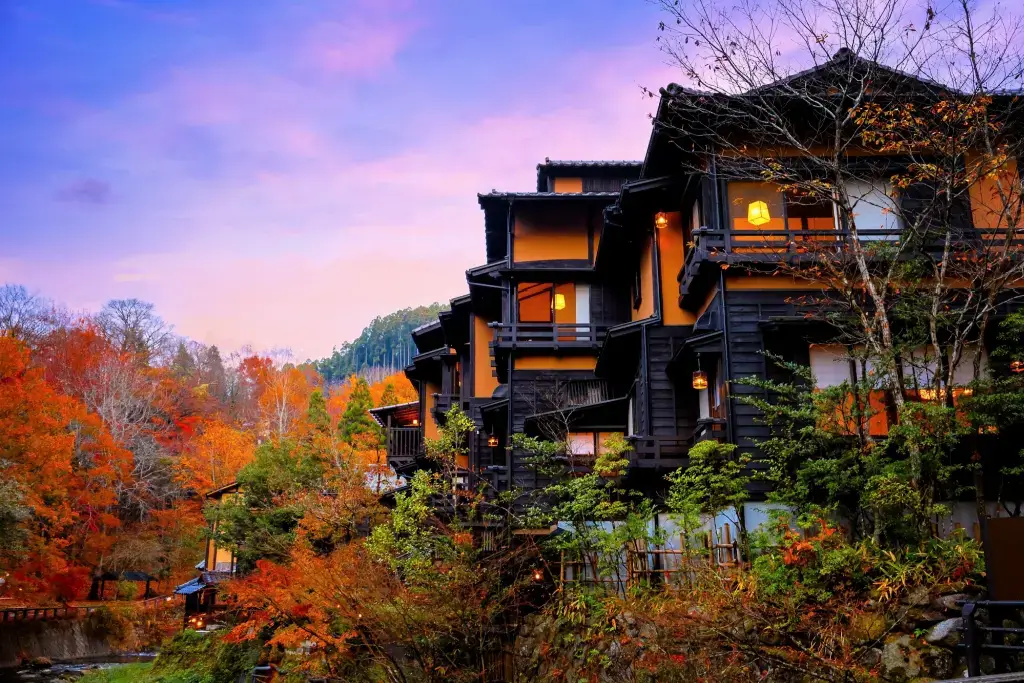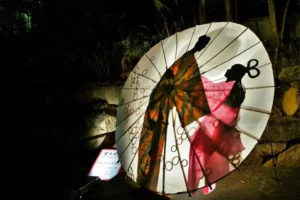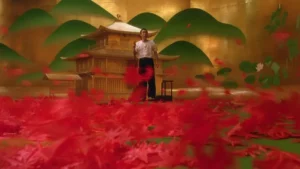Kurokawa Onsen is highly regarded as one of Japan’s best onsen (hot spring) towns. With beautiful scenery, refreshing baths, and Kumamoto’s local culture, visitors of all ages will enjoy their visit, especially if they spend the night at one or more of the onsens (hot springs). However, don’t take our word for it. Allow us to escort you on a short visit to Kurokawa Onsen, its history and origins, unique features, and the best hot springs and ryokans (traditional inns) you should visit. We hope you enjoy your stay there!
Table of Contents
ToggleWhere is Kurokawa Onsen?
Kurokawa Onsen is located in Kumamoto Prefecture, about 20 kilometers (12 miles) north of Mount Aso along the Kuro River (黒 川). Mount Aso is Japan’s largest active volcano and is joined by the equally active Mt. Naka (or Nakadake) and the volcanic cone Komezuka. Unsurprisingly, bathhouses and inns sprang up due to this volcanic activity.
As far back as the Edo period (1603-1868), daimyos (feudal lords) would stop to rest and bathe in the hot springs during their travels. Kurokawa Onsen has retained this same charm despite undergoing renovations since the 1960s. This gamble paid off when the town received two stars in the Michelin Green Guide for Japan 2009.
With Kurokawa Onsen’s remote location, visitors’ best option is to travel by car. Rentals are available at Kumamoto Station (1.5 hours away in Kumamoto), Hakata Station (two hours away in Fukuoka), or Yufuin or Beppu Cities (about an hour away). Public transportation is also available from Yufuin, Beppu, Kumamoto Airport, Hakata Airport, and Fukuoka Airport.
What makes this town unique from other resort towns?
When Kurokawa Onsen began expanding to attract and serve tourists better, it resisted commercializing like other resort towns. There is a notable absence of neon lights and concrete structures; the town is built around the river, additional trees were planted, and the streets were primarily kept narrow, perfect for pedestrians.
In keeping with the natural surroundings, the buildings are made of wood, stone, clay, and similar materials painted in earthen tones. Those who rent yukata to wear as they explore can easily imagine they’ve stepped back in time. It is essential to mention that some ryokans can only be accessed by car from Kurokawa Onsen.
However, the variety of rotenburo (open baths) truly sets Kurokawa Onsen apart, including single-gender and family baths. They can get there via the Nyuto Onsen Hopping Pass. The tegata (wooden medallion-like object) is available at the information center and participating onsen for 1300 JPY ($8 USD) and used at up to three different ryokans at a time.
Are you looking for great snacks while visiting hot springs in Japan? Check out Sakuraco! Sakuraco delivers traditional Japanese snacks, teas, sweets, and snacks from local Japanese makers directly to your door so you can enjoy the latest treats from Japan!
Which hot springs should I go to?
With nearly 30 hot springs, visitors have many options at Kurokawa Onsen. The following destinations are our recommendations. Note that a shuttle service is available from the city center to each location.
Iyashi no Sato Kiyashiki
Located on a hill close to the center of Kurokawa Onsen, Iyashi no Sato Kiyashiki promises healing and warm bliss. There are several baths, including the large open-air “Manten no Yu,” and a restaurant serving exquisite kaiseki (traditional multi-course) meals featuring local Higo beef. Adult guests can sample one or more of the 300 types of shochu kept at the bar lounge.
Yamamizuki
Secluded among the trees and mountains, Yamamizuki’s baths offer weakly acidic water to relieve muscle and joint pain. There is a small waterfall on the other side of the men’s pool and a stream behind the ryokan itself. Other highlights include Japanese and mixed Japanese-Western rooms and the excellent restaurant Hanakatakata.
Ryokan Wakaba
We have saved the best for last. Ryokan Wakaba is unique since its spring water contains metasilicic acid, which has moisturizing and soothing properties. The spacious rooms offer in-door dining and private baths. Meanwhile, the kaiseki meals include Wagyu beef, vegetables from Ogunigo, and local specialties like basashi (raw horsemeat).
Why should I visit Kurokawa Onsen?
Due to its proximity to volcanoes, Kurokawa Onsen’s hot springs offer unique benefits. From essential nutrients and minerals to pain-relieving and soothing properties, these waters are guaranteed to refresh visitors’ bodies, minds, and souls.
Visiting the ryokans and stores within Kurokawa Onsen allows tourists to interact with local businesses. Whether they eat kaiseki meals made with fresh ingredients or rent a handmade yukata, tourists show more than just their financial support to owners and staff.
Finally, this hot spring town retains an otherworldly ambiance due to the insistence on using natural materials and emphasizing traditional Japanese features and activities. Even people staying within Kurokawa Onsen proper feel like they’ve left the city behind. Have you visited Kurokawa Onsen before? Did you stay at any of these ryokans? Share your experience in the comments.










